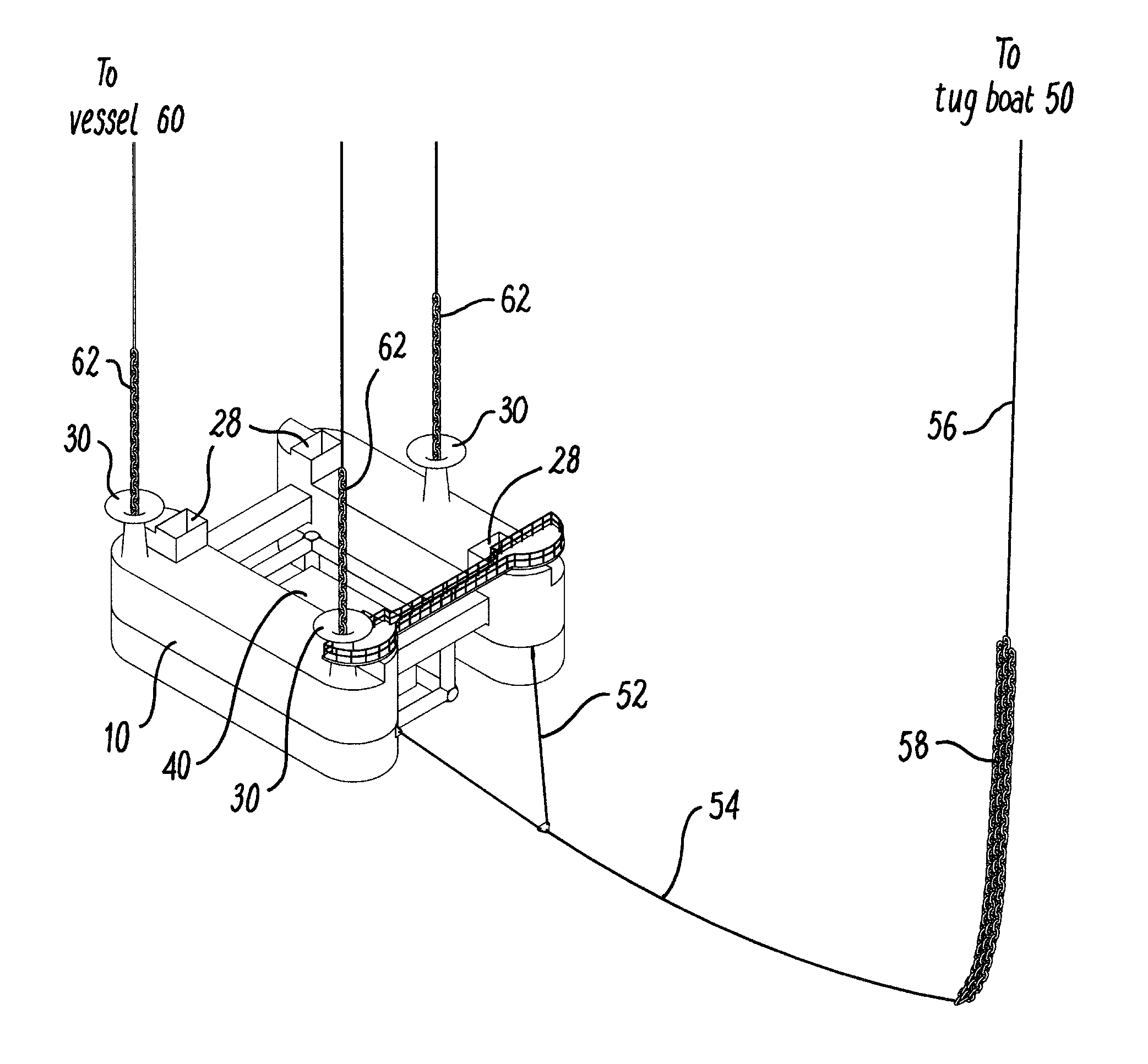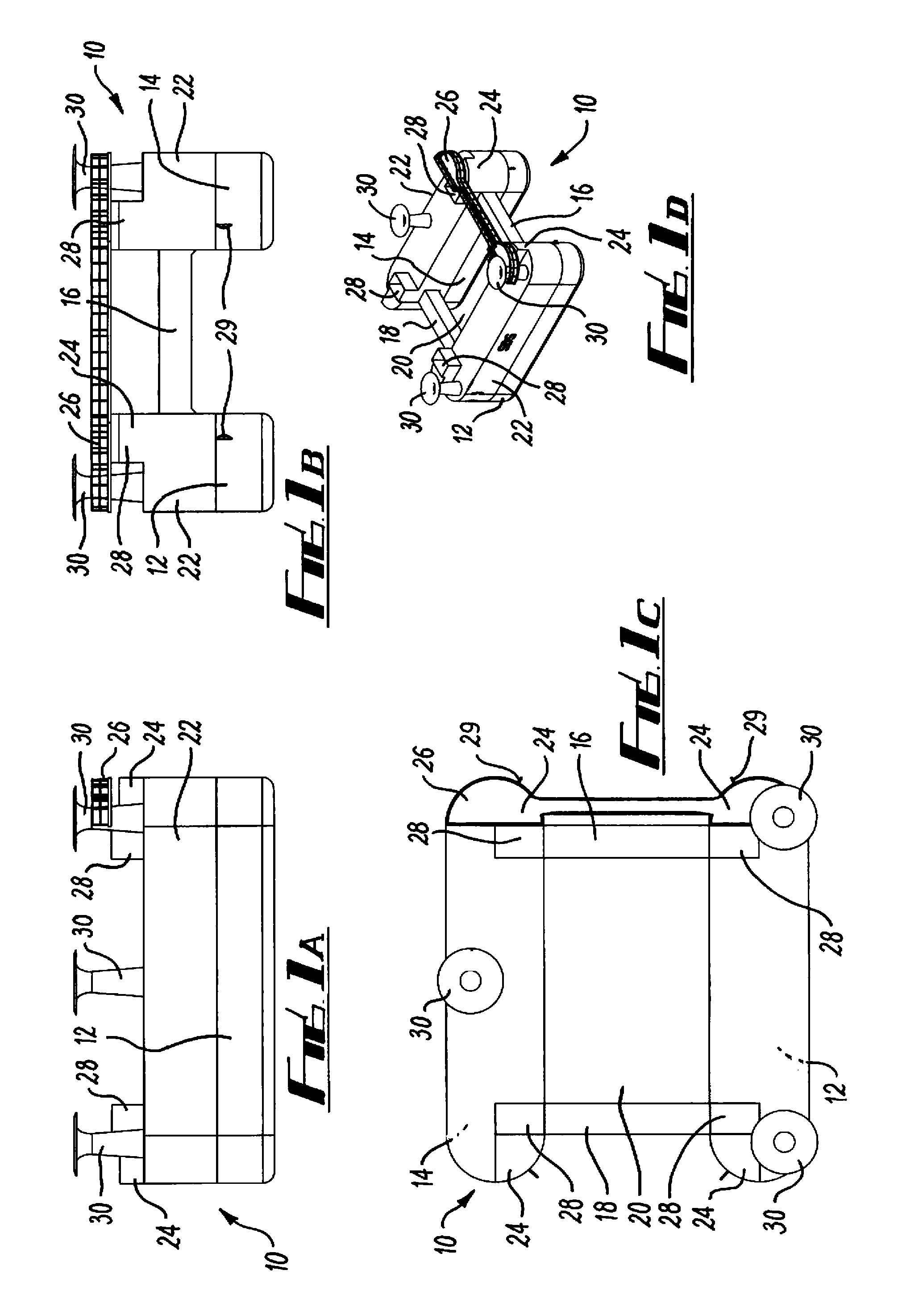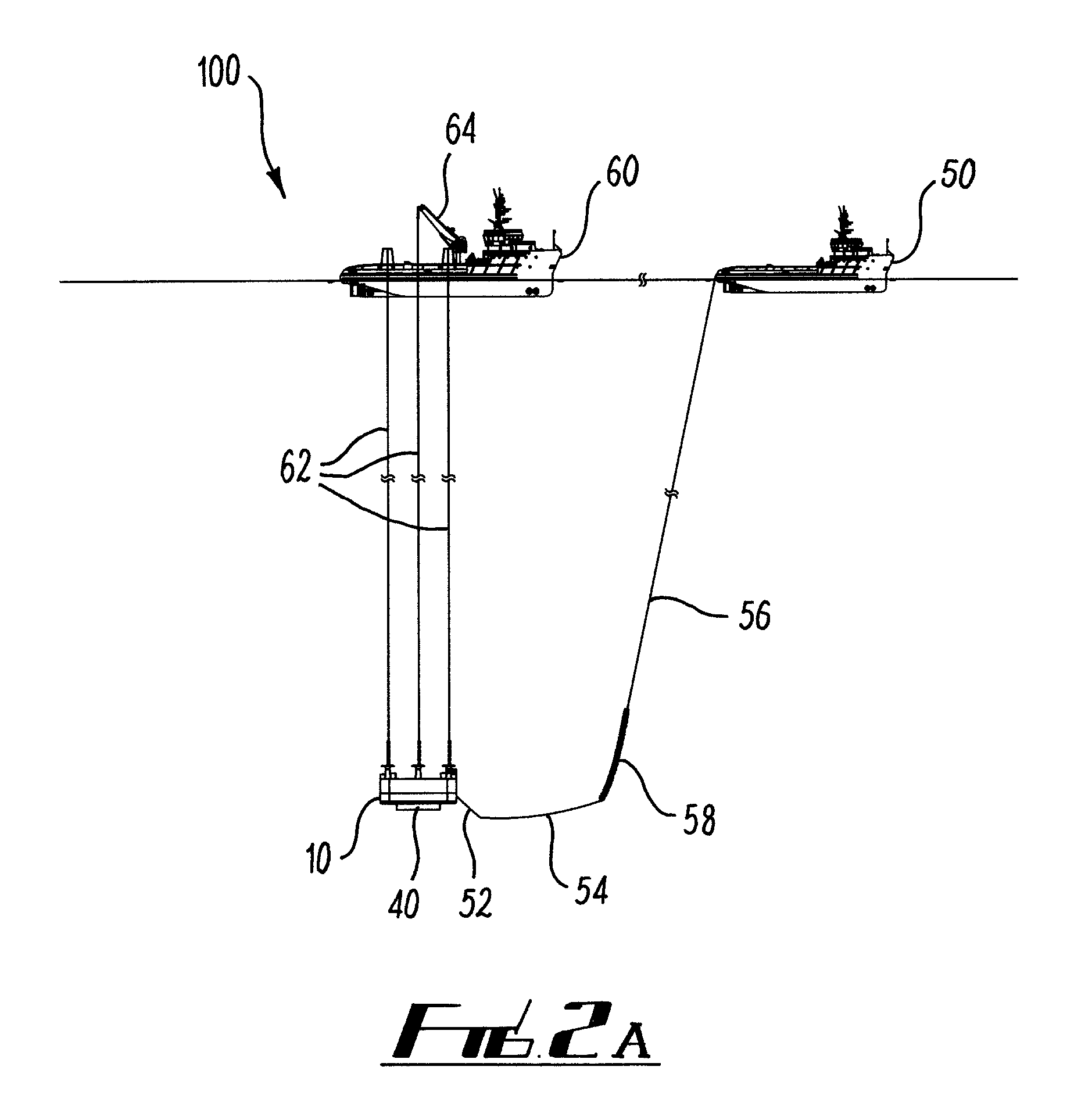Method and apparatus for subsea installations
a technology for subsea installations and methods, applied in the direction of artificial islands, marine vessel transportation, fluid removal, etc., can solve the problems of reducing the effective crane capacity, and reducing the weight and size of the load, so as to facilitate the lateral control of the apparatus
- Summary
- Abstract
- Description
- Claims
- Application Information
AI Technical Summary
Benefits of technology
Problems solved by technology
Method used
Image
Examples
Embodiment Construction
[0053]Referring firstly to FIGS. 1A to 1D, there is shown an apparatus 10 used in an installation operation for lowering or raising a payload or structure to or from the bed of a body of water. In the examples described, the invention is applied to a marine environment in which the load is lowered or and / or raised from the seabed. It will be appreciated that the invention also has application to freshwater environments.
[0054]The apparatus 10 comprises two hulls or pontoons 12 and 14, which are of a size and shape suitable for providing enough buoyancy for transportation of the apparatus with shallow draught. The hulls 12, 14 are linked together by one forward transverse bridging member 16 and one aft transverse bridging member 18, which maintain the hulls in a fixed spatial relationship and provide a load bearing structure for a payload (not shown). A space 20 is defined between the hulls. The spacing between the hulls 12, 14 is selected to accommodate a payload or structure to be l...
PUM
 Login to View More
Login to View More Abstract
Description
Claims
Application Information
 Login to View More
Login to View More - R&D
- Intellectual Property
- Life Sciences
- Materials
- Tech Scout
- Unparalleled Data Quality
- Higher Quality Content
- 60% Fewer Hallucinations
Browse by: Latest US Patents, China's latest patents, Technical Efficacy Thesaurus, Application Domain, Technology Topic, Popular Technical Reports.
© 2025 PatSnap. All rights reserved.Legal|Privacy policy|Modern Slavery Act Transparency Statement|Sitemap|About US| Contact US: help@patsnap.com



